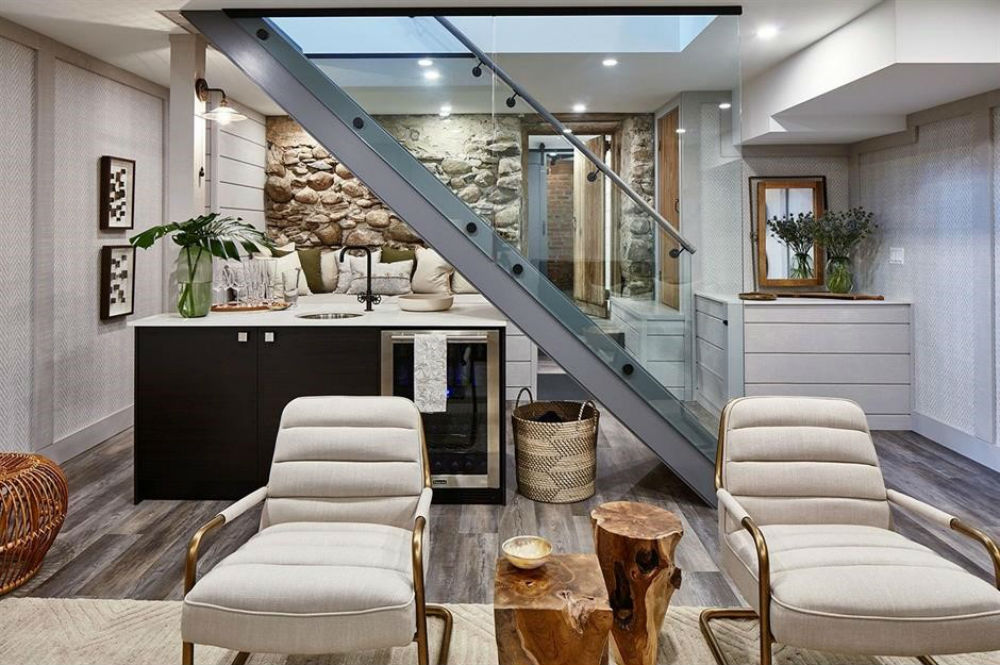Sign up to our newsletter!
No matter if you are moving, or improving, our newsletter is packed with the best tips, tricks and ideas to help you dwell well.

Source: The Resident
In Central London, the trend for basement extensions has really taken off, especially in residential properties where above-ground development opportunities are minimal or have already been exploited.
There are two main types of basement conversion: turning an existing subterranean space into usable living space, or excavating a new basement. Either way, this is not a home improvement project for the faint hearted. If you’re tempted to dig deeper for more space in your home, whether it’s for a playroom or home cinema, swimming pool or guest rooms, do your homework and check that your property is suitable and the project is viable. Here are 11 key factors to consider,
1. How will contractors gain access during the build?
Is there on-site access for the builders? Think about the removal of soil and waste, the delivery and storage of tools and building materials and the constant disruption of contractors coming and going in what is effectively a building site. It may well be that the best solution is for you and the family to decamp for the duration of the build and go into temporary accommodation.
2. How will you get down there from your existing home?
How accessible is the new basement internally? You and your architect will need to allow for space for a staircase to be fitted so that your basement extension can become a seamless part of your new, improved home. The stairs down to the basement need headroom of at least 2 metres above, suitable handrails and an incline of no more than 42 degrees.

3. How will you get the neighbours on side?
A basement conversion won’t just impact your property. If you live in a semi-detached or terraced house, your conversion will affect the shared party wall(s). According to the Party Wall Act 1996, you are legally obliged to obtain your neighbours’ consent before you can start building, and a formal Notice must be served. “Start with an informal chat and let them know what you are planning to do, to increase the likelihood of their giving consent,” advises Party Wall Surveyors, Brian Gale.
Or perhaps get a free quote and some advice before you start from one of Moving and Improving's party wall surveyors
4. Have you considered the existing property structure?
Ask your surveyor or a structural engineer to take a look at the structural condition of your property including existing walls and foundations to make sure they are strong enough to take a basement excavation or conversion. If the ground is excavated, the foundations of your house will need underpinning , while the walls may need strengthening with supporting beams.
5. Is your house type suitable for a basement conversion?
Check with a surveyor that you have the right property type for a basement. Some older houses with shallow foundations may need underpinning first to ensure safety before excavations can begin. Victorian houses with suspended timber floors work exceedingly well since most of the renovation work can be carried out from outside. Modern townhouses or terraced houses built on raft foundations, by contrast, can’t be underpinned and are therefore not suitable for basement excavations.
6. Do you have the right soil type and ground conditions for a basement?
Speak with your local building control officer to determine the suitability of local ground conditions for your building plans. Stone, clay or sand around your property can cause problems when it comes to installing solid floors. A high water table, or soils with a high or low water content will need additional waterproofing and specialist construction methods, which may make the project unviable.
7. Will drainage constitute a problem?
Protection from groundwater is essential to prevent damp and flooding. You should ensure that any slopes incline away from the building, diverting drains to redirect water away from your basement. Waterproofing may take the form of a cavity membrane to trap damp and channels moisture down the side of the basement walls to a sump. Alternatively, tanking and waterproof membranes may be applied. Foul water must be collected in a sump and pumped into the sewer which will probably be above ground level.
8. Is there a pre-existing damp problem?
If your existing basement suffers from damp, this will need addressing during the basement conversion. Removing damp, treating ancillary wood rot and decay issues and adding damp proofing measures will add to the cost of the build, while new basements will need damp proofing in any event. Also check Building Regulations for specifications to provide rapid ventilation for habitable rooms, kitchens, bathrooms and utility rooms, to make sure you comply.
9. How will sufficient natural light be provided?
Is there, or will there be, enough light in the underground areas? While most basements are deficient in natural daylight, the importance of light should never be underestimated. Whether you can fit additional windows or glass doors, rooflights or light wells, and supplement with clever artificial lighting options, there are a number of ways to consider to maximise light.

10. Is your basement high enough?
The height of the finished basement room(s) should be at least 2.4 metres. If you have an existing underground space you are wishing to convert that currently has a lower room height, you will need to dig deeper to create more space. Make sure you allow for insulation, lights, plumbing and ventilation pipes too.
11. Where will you put a fire escape?
A basement conversion into habitable space must have an external door or window available that can be used as an emergency exit in case of fire. Check Building Regulations for the required size, and the minimum size of the aperture too.
This article is part of a series of lifestyle content pieces written for Moving and Improving by Annie Button. Find out what else Annie has been up to over on Twitter: @anniebutton1994 or visit more of Annie's amazing articles in our related blog section.
Live well with Moving and Improving